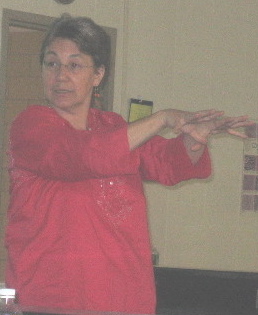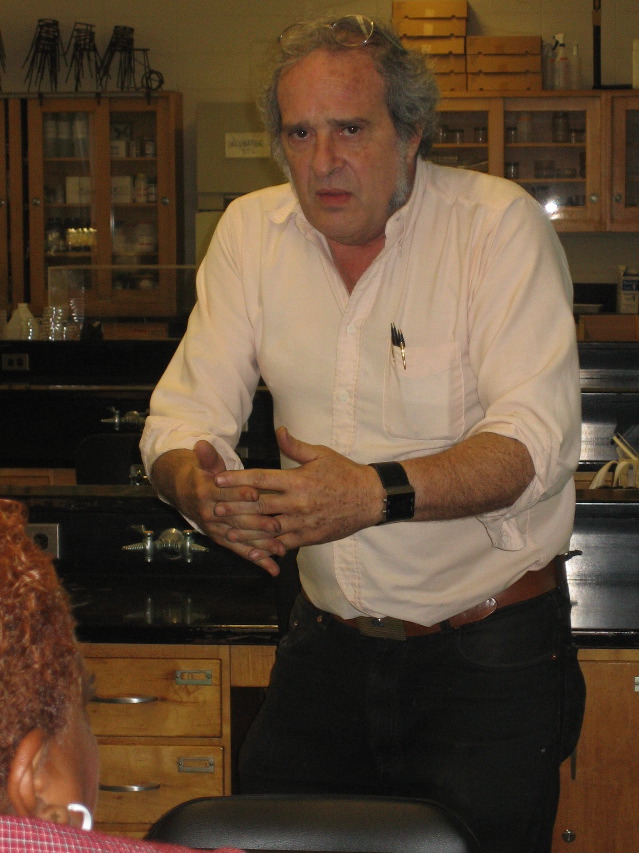Remote Ready Biology Learning Activities has 50 remote-ready activities, which work for either your classroom or remote teaching.
Serendip is an independent site partnering with faculty at multiple colleges and universities around the world. Happy exploring!

|
A Conversation About Self and Other, Organism and Environment, Inside and "Out"side.... | 
|
| Paul Grobstein and Anne Dalke are colleagues at Bryn Mawr College who, over the course of the past five years or so, have collaborated on a range of activities: courses, working groups, symposia, brown bag sessions and essays about all of the above. In the latter, they explore common ground they have discovered together. Here, they take time to explore some of the persistent differences...in the hope that others may find them useful also. Please join them as the conversation continues in the on-line forum. |
February 8, 2006
So, Paul, hundreds of cups of coffee later--here's where I'm at.
You'd asked me to prepare a bibliography of materials on the intersection of cognitive science and literary studies; you'll find that link above. As I was doing the (relatively tedious) work of putting together this list, it felt as though I were drawing a family tree, without including the stories to which such a geneology is only an index: the aunt who hid out in the attic, the uncle who had to leave town suddenly....
So how about this? I tell you what I'm noticing @ this intersection--where literature feeds cognitive science, and cognitive science feeds literature, and you talk back a bit....?
| One difference between how you (as a cognitive scientist) and I (as a literary critic) approach the world is the relative emphasis we place on the importance of individual identity. We have very different modes, for instance, in terms of the way we credit (or not) our sources of information. You generally don't flag people from whom you take ideas (and actively encourage writers in Serendip's forums not to do the same). My approach is very different: for me, ideas always have legs, emerge out of particular bodies--and an important aspect of my evaluation of stories (my deciding, for instance, whether I can trust a particular account) has to do with where-and-who it comes from, what their particular investments, individual limitations and sightlines might be. Whether they tell the story with a frown or a grin on their face, whether they are looking me in the eye or not, as they tell their tale. |  |
 | Given this difference, it makes sense that you were drawn to biology--knowing about life (in general), while I was led into the study of literature--writing about lives (in particular). And yet (paradoxically? or @ least curiously), your interests have focused largely on the inside of the organism--in particular on the bipartite nature of the brain, and how it "talks" to and re-shapes itself in the process. My focus has been rather on what happens in the "outside": on relation of the self to the environment, how it is mirrored, refracted, and shaped in its engagements, how it actually comes to know itself through interactions with others nearby. |
Generally, these two p.o.v.'s are complimentary; each helps to fill in blindspots of the other. I'd even go so far as to grant that literary studies is a part of what Nancy Easterlin has called "bioepistemology"--the view that knowledge is made, and made in relation to the capabilities of human knowers. What has actually interested me most (so far) has been what Easterlin terms the "cognitive imperative": the human need to organize sensory imput in a meaningful fashion. What has seemed to interest you more has been those explorations beyond what is already shaped--the generativity of pushing past what is known. If the "brain operates flexibly within parameters that both enable and constrain knowledge" (Easterlin, again), then I've been looking @ the constraints, while you've been insistently attending to the enabling.
I've spent my professional life, for instance, trying to understanding narrative, coming to realize that it's our means for getting a grip on the randomness of the universe, first by identifying causes and their effects, then by laying them out in a linear fashion. So I'm most interested in the "ends" of stories, in the ways we use them to get somewhere. Your own move into "non-normal" inquiry seems to have involved a different focus: a consistent unsettling of the linear, an activity that involves noticing the edges of stories, going beyond the endings to give new accounts of what's been omitted from the old. While I've been trying to get to the mountaintop (say, sort of), you've recognized the limitations of hill-climbing, and gone more freely exploring, unbound by what has been done so far...
What that difference might mean, in terms of the current intersection of neurobiology and literary criticism (at least as represented by these two practitioners) is that we have been learning, reciprocally, not only about the constraints on--but also about the imaginative possibilities that exceed--what it is we have been dealt, biologically...?
 |  |
[an error occurred while processing this directive]